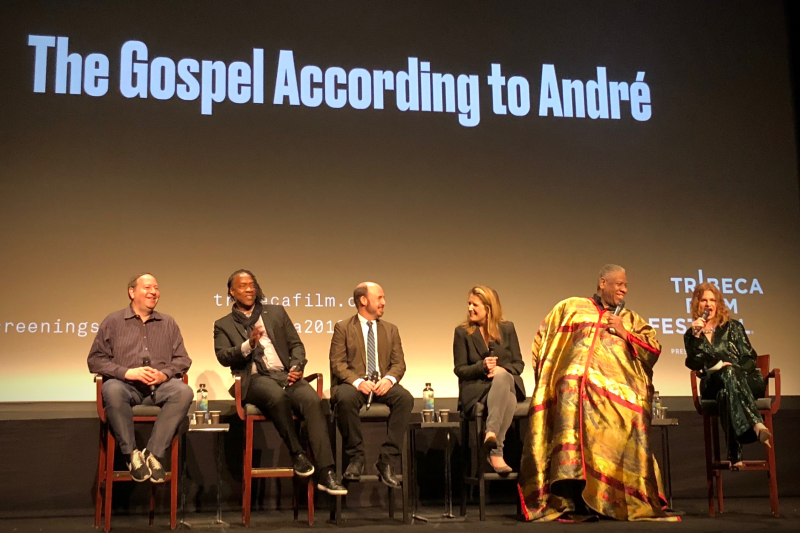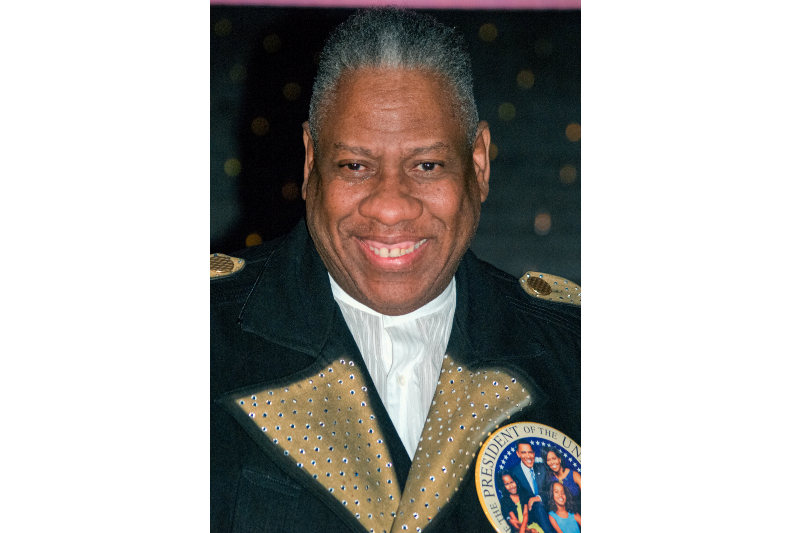André Leon Talley was a big man with an even bigger bearing. Six-foot-six, Talley often arrived adorned in splendid capes and caftans, sail-sized coats, and dinner plate-diameter sunglasses. A style icon who couldn’t be missed, the style world already feels the absence of his larger-than-life presence.
On January 18, the legendary fashion editor died suddenly and unexpectedly of a reported heart attack. He was 73.

Talley served as an editorial star for the world’s largest fashion magazines since 1975. This included stints with Andy Warhol at Interview, Women’s Wear Daily, W, Ebony, and The New York Times before landing at Vogue until 2013. As an icon, Talley spent his later career advocating for diversity in fashion, describing the psychic toll of appearing as the lone Black person on mastheads in his best-selling 2020 book, The Chiffon Trenches: A Memoir. Over six decades, Talley was quite literally larger than life and lived in the fashion world on a grand scale.
“Friendship with him meant being part of his erudite, gilded, and fiercely self-created existence; of being in the orbit of someone who had the incredible gift, one amplified by his immense charm, of always being able to joyfully turn the volume of life up — way, way up,” Vogue editor-in-chief Anna Wintour wrote about her friends and Vogue peer for 40 years.
Tally’s maternal grandmother, Binnie Francis Davis, raised the future fashion icon in her Durham, North Carolina home in the segregated Jim Crow South. In 2018, on NPR’s Fresh Air, Talle told host Terry Gross that he often felt like a misfit and was bullied for his stylish clothing. Around nine or 10-years-old, he found an issue of Vogue at the public library. Caught by the hand of fate, the young man was captivated, cascading down the “rabbit hole” into “a world of glamour,” he said.
“(Vogue) was my gateway to the world outside of Durham,” Talley said to Gross. “It was the world of literature, what was happening in the world of art, what was happening in the world of entertainment.”
Related Guides
Talley went on to study French literature at Brown University in Providence, Rhode Island. With the connections he gained there, the young man earned an unpaid apprenticeship for then Vogue editor-in-chief Diana Vreeland at the Metropolitan Museum of Art in 1974. Impressed by his skills, Vreeland connected Talley with Andy Warhol’s Factory and Interview magazine. This led to several fashion magazine stints that led to his arrival at Vogue in 1983. Talley would serve as the magazine’s fashion news director from 1983 to 1987, the magazine’s first African-American male creative director from 1988 to 1995, and its editor-at-large from 1998 to 2013. As a six-foot, six-inch gay Black man, this was a conspicuous and challenging position at first, but Talley handled it with grace and aplomb.

“I just rose to the occasion,” he said on Fresh Air in 2018. “I stood up straight and tall — like a tall, tall sunflower — and I just radiated the light and the beauty of my mind in relationship to the world of fashion.”
The 2000s were when Talley rose even higher, elevating from influencer to icon. In 2003, he authored an autobiography entitled A.L.T.: A Memoir in which the editor described how the fashion world shaped his humanity.
“Style transcends race, class, and time,” Talley wrote.
In 2008, Talley became the Obama family’s fashion advisor, eventually styling Michelle Obama for her first Vogue cover. From March 2010 to December 2011, Talley served as a judge and panelist on America’s Next Top Model. And in 2016, Talley served as the subject of the documentary, The Gospel According to André — directed by Kate Novack, screened in September 2016 at the Toronto Film Festival and was released in the U.S. on May 25, 2018.
“He’s the Nelson Mandela of couture. The Kofi Annan of what you got on,” a peer says in the film’s preview.
Talley would eventually use his massive platform to advocate for diversity in the fashion world and mentor several designers and models of color, including Naomi Campbell.
“He was very involved in fighting for more diversity on the runway, for more Black models,” New York Fashion Week creator Fern Mallis said to CBS NYC. “Mostly on the runway, and then that became a movement about every aspect of the industry.”
The man seemingly left every life that he touched more positive for its brush. Today, there is a huge hole in haute couture with Talley’s death, yet his robes and gowns will continue to flow through the styles that the large man sewed over six decades of monumental impact.
Read More: Off White and Louis Vuitton Fashion Visionary Virgil Abloh Passes at 41



